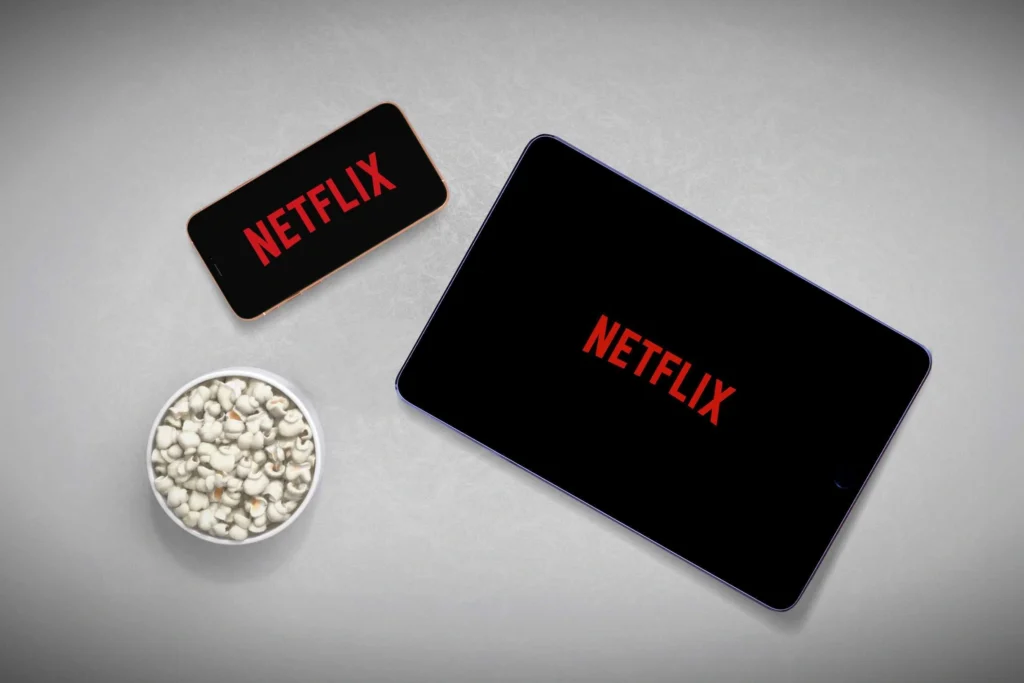The Subscription Economy in 2025
In recent years, the subscription economy has experienced remarkable growth, fundamentally altering the way consumers access products and services. By 2025, individuals find themselves increasingly reliant on a diverse array of subscription services, ranging from streaming platforms and software applications to food delivery and grocery services. This shift towards a subscription-based model has provided consumers with unparalleled convenience and accessibility; however, it often leads to unanticipated expenses that can strain one’s budget.
As the subscription landscape expands, many individuals subscribe to multiple services without a comprehensive understanding of the cumulative costs involved. For example, a household may enjoy several streaming services, a monthly grocery subscription, and an array of other automated deliveries, quickly resulting in a substantial financial commitment. This phenomenon highlights the necessity for consumers to evaluate and manage their subscription usage effectively.
The proliferation of subscription services in 2025 reflects broader consumer trends, showcasing a preference for immediate access over ownership. While this trend enhances flexibility, it necessitates a careful consideration of one’s spending habits. It is essential for budget-conscious consumers to actively assess their subscriptions and determine which services genuinely add value to their lives. Ignoring these expenses can lead to a significant financial burden, causing individuals to overlook potential savings opportunities.
The purpose of this blog post is to provide actionable strategies for reducing costs associated with subscription services. By exploring practical tips and sustainable practices, we aim to empower consumers to make informed decisions, ultimately leading to a more balanced financial life. As the subscription economy continues to evolve, mastering the art of mindful consumption will prove indispensable for those striving to maintain control over their financial resources in 2025.
Understanding Your Subscription Habits
In today’s digital age, subscription services have become an integral part of our daily lives. With platforms offering everything from entertainment to meal kits, it is vital for consumers to understand their subscription habits to manage their finances effectively. The first step in this process is to create a comprehensive list of all active subscriptions. This list should encompass streaming services, software, memberships, and any other recurring payment obligations. Not only does documentation provide clarity, but it also serves as a basis for analyzing spending patterns.
Once you have a complete inventory of your subscriptions, the next step is to assess how frequently each service is being used. By monitoring usage patterns, you will identify which subscriptions are valuable and which may be going unused. For instance, if a streaming service was only used during a particular season or for a specific show, consider whether it is worth maintaining during off-peak times. Such evaluations can help in recognizing services that may no longer justify their cost.


Moreover, it is essential to remain vigilant about promotional offers that often lead to unconscious spending. Initial trial periods and discounted rates can entice consumers, but over time, users may forget to reassess whether they need the service. As you analyze your subscriptions, make a note of these types of offers that may have resulted in unnecessary expenditures.
Recognizing any subscription services that you no longer utilize can significantly aid in reducing your overall expenses. By systematically evaluating your needs and habits, you empower yourself to make informed decisions, allowing for potential cost-saving modifications to your subscription portfolio. Through these steps, consumers can foster a more strategic approach to subscription management, ultimately aligning their spending with their actual usage and lifestyle requirements.
Reviewing Subscription Options: The Power of Comparison
As subscription services proliferate, the need for consumers to evaluate their options has never been more critical. The sheer variety of plans available from various providers can be overwhelming, making it essential for budget-conscious individuals to engage in a thorough review process. By comparing different subscription options, users can identify which services offer the best value and align most closely with their needs and preferences.
With numerous subscription models emerging, from entertainment streaming to meal delivery services, consumers can benefit significantly from utilizing comparison tools and websites. Such resources allow users to examine the specifics of each plan, including prices, features, and user reviews. Websites like Comparably and Subscription Hero not only provide insights into costs but also illustrate the features that differentiate each subscription service. These comparisons enable users to make informed decisions that lead to more satisfactory usage and, in many cases, substantial savings.

User reviews are another critical component when assessing subscription options. Beyond just price and features, learning from the experiences of others can provide deeper insights into the value and limitations of a given service. Many comparison platforms incorporate user ratings, helping potential subscribers gauge the overall satisfaction levels and responsiveness of customer service, which are essential aspects of any subscription experience.
Moreover, examining user feedback can highlight hidden advantages or disadvantages that might not be apparent from promotional materials alone. This informed approach facilitates a more nuanced understanding of each subscription offering, guiding consumers toward choices that best fit their lifestyles and budgets. By dedicating time to review options, users can ultimately streamline their subscriptions, ensuring they pay only for those that provide genuine value.
Leveraging Free Trials and Promotions
In the ever-expanding world of subscription services, consumers have the opportunity to explore a variety of offerings through free trials and promotional offers. These options can serve as valuable tools for those looking to save money while discovering new services. By taking advantage of these initiatives, budget-conscious consumers can assess different subscription platforms without committing financially upfront, thereby optimizing their spending.
To begin with, it is essential to identify free trial periods offered by various platforms. Many subscription services provide a no-cost introductory phase, allowing potential users to engage with their content or features. This period can range from a week to a month, depending on the specific service. To make the most of these offers, consumers should create a list of subscriptions they are interested in and sign up for their free trials one by one. This strategy helps in effectively managing multiple trials without overwhelming oneself.
Additionally, taking note of the expiration dates of these trials is crucial. A common strategy among users is to set reminders on their devices, which can help prevent any unwanted charges once the trial period ends. It is advisable to mark the end date on a calendar or utilize digital reminders to ensure that subscriptions are canceled before being charged. Furthermore, some services may allow you to pause or put your subscription on hold instead of canceling it, providing flexibility if you wish to revisit the service later.
Incorporating these promotional offers into your subscription management can also lead to significant savings. By keeping an eye out for seasonal promotions or discounts, consumers can enjoy extended access or enhanced features at a fraction of the price. Overall, smart utilization of free trials and promotions can enhance the consumer experience while maintaining budgetary constraints.
Bundling Services for Greater Savings
As subscription services continue to gain popularity, many providers have recognized the advantages of offering bundled packages that combine multiple services into one. This strategy can lead to significant savings for consumers, ensuring they receive more value for their financial investment. Bundling services, such as music and video streaming, provides not only convenience but also reduced overall costs, making it an increasingly appealing option for budget-conscious individuals.
Many companies offer various combinations of their services at a discounted rate compared to subscribing to each service separately. For example, a well-known telecommunications provider may include free access to streaming platforms with a mobile or internet plan. Similarly, some music streaming services offer bundles with podcasts or video content, enhancing the user experience while allowing consumers to save money. Such offers can lead to substantial reductions in monthly expenses and foster a more satisfying subscription experience.

Moreover, bundling services encourages consumers to explore new content. When multiple subscriptions are packaged together, users gain access to a wider range of entertainment options, making it easier to discover diverse genres or formats without incurring additional costs. This can boost customer satisfaction and loyalty, resulting in a win-win situation for both providers and subscribers.
When considering bundling options, it is crucial to evaluate usage patterns and preferences. Assess which services are utilized most frequently and where savings could be maximized. By strategically selecting bundled packages that align with personal interests, consumers can streamline their subscriptions and take full advantage of the discounts offered.
In summary, as consumers navigate the realm of subscription services, bundling presents an effective strategy for enhancing savings while enjoying a wide array of options. Embracing such opportunities allows individuals to manage their budgets more efficiently while still accessing the entertainment they love.
Utilizing Family Plans and Shared Subscriptions
In today’s era of digital consumption, subscription services encompass various categories, from streaming to software. One effective way for budget-conscious consumers to reduce their expenses is by utilizing family plans and shared subscriptions. These options allow individuals to share access to preferred services, resulting in significant savings while enjoying the same benefits.
Numerous platforms now offer family plans that provide access to multiple users under a single subscription. For instance, popular streaming services like Netflix and Spotify enable users to sign up for family tiers where several individuals can share one account. This can lead to a dramatic decrease in per-person costs compared to individual subscriptions. By splitting the fee among family members or friends, each participant pays a fraction of the original price. This strategy not only encourages budget management but also fosters social connections through shared interests.
Moreover, some software and gaming platforms offer subscriptions where multiple devices can be linked to one account. Services such as Adobe Creative Cloud and Xbox Game Pass allow users to share access, effectively distributing the subscription cost. This means that instead of each individual facing the full expense, they can pool resources to create a more economical solution.
When considering shared subscriptions, it is essential to establish clear communication and agreements with those involved. Trust among participants is crucial; ensuring that everyone contributes fairly will enhance the experience and viability of shared plans. Furthermore, evaluating different services for family options can yield bespoke savings tailored to specific interests and needs.
In conclusion, by leveraging family plans and shared subscriptions, consumers can significantly cut down on costs associated with multiple services, thereby enhancing their overall budget management and financial well-being in 2025.
Discounts and Reward Programs: Getting More for Less
As subscription services continue to gain popularity, finding effective ways to save money on these recurring expenses is vital for budget-conscious consumers in 2025. One of the most efficient strategies involves taking advantage of discounts and loyalty programs offered by many subscription platforms. These offers can significantly reduce your overall spending and allow you to enjoy your favorite services without breaking the bank.
Firstly, numerous subscription services provide student discounts, which can yield savings for those currently enrolled in educational institutions. These discounts are often substantial, enabling students to access premium content at a fraction of the standard price. To take advantage of such offers, verify your student status through the service’s specified validation process and enjoy the reduced rates on subscriptions like streaming services, software applications, and other digital platforms.
Another effective approach is to look into annual membership plans. Many subscription providers offer a lower monthly rate when you commit to an entire year of service upfront. This not only provides immediate savings but also locks in your rates, protecting you from potential price increases down the line. This strategy works well for services that you plan to use consistently, offering additional peace of mind.
Referral programs also play a crucial role in reducing expenses associated with subscription services. Many platforms incentivize their current users to refer new clients, providing them both with bonuses such as free months or discounts. Actively participating in these programs can lead to significant savings over time. Reach out to friends and family to maximize your reward potential, as these programs are often underutilized.
Ultimately, by utilizing discounts, annual memberships, and referral bonuses, consumers can make informed decisions that enhance their subscription experience while minimizing costs. These strategies are invaluable tools in the quest to save money on subscription services in 2025.
Knowing When to Cancel or Downgrade
In the current economic landscape, consumers are increasingly reliant on subscription services, ranging from streaming platforms to monthly product deliveries. However, as budgets tighten, it becomes crucial for individuals to routinely evaluate their subscriptions to determine which services may no longer provide value. The key to this process is establishing a regular assessment frequency, ideally on a quarterly basis. This allows consumers to stay informed of their spending patterns and assess the utility of each subscription.
During each evaluation period, it is advisable for consumers to reflect on their usage of subscription services. For example, if a streaming service is used only occasionally or a fitness app has not been accessed in months, these could be prime candidates for cancellation or downgrading. One effective tactic is to create a simple spreadsheet to monitor usage and costs, enabling a clear overview of which subscriptions contribute positively to one’s lifestyle and which do not.
When considering cancellation, it is also beneficial to engage directly with service providers. Many companies are aware of the competitive subscription market and may offer retention deals to keep customers from leaving. If a service is valuable but overpriced, customers should feel empowered to negotiate for a lower fee or a more appropriate plan. It is not uncommon for providers to offer discounts or incentives in response to a cancellation request, making this a strategic move for budget-conscious consumers.
Through regular evaluations and proactive communication with service providers, consumers can take control of their subscription spending. This approach not only helps in eliminating unnecessary costs but also ensures that only those services which genuinely enhance one’s lifestyle are retained, paving the way for a more sustainable financial future.
Smart Choices for a Budget-Friendly Subscription Lifestyle
As consumers increasingly turn to subscription services for various needs, it becomes essential to approach these offerings with mindfulness and strategy. By implementing smart budgeting strategies, individuals can reap the benefits of subscription services while maintaining financial health. The key is to develop a proactive mindset, assessing subscriptions regularly and ensuring they align with personal lifestyles and budget constraints.
One of the primary strategies discussed is the importance of keeping track of subscriptions. Utilizing budgeting and financial management tools can help consumers maintain a clear view of all expenditures. This practice not only aids in identifying unnecessary subscriptions but also fosters greater awareness of spending habits. By analyzing subscription usage, individuals can make informed decisions, thereby reducing wasteful spending and optimizing their budgets.

Furthermore, understanding the nuances of subscription contracts, such as promotional rates and cancellation policies, is crucial. Many consumers fall into the trap of automatic renewals without fully comprehending the terms. By being vigilant about the details, consumers can avoid unexpected charges and ensure they are getting the best value from their chosen services. For more insights on avoiding common pitfalls, check out 5 Mistakes to Avoid When Shopping Online.
Additionally, exploring alternatives to popular subscription services, including free trials and ad-supported access, can significantly relieve financial burdens. By being flexible and open to different solutions, budget-conscious individuals can continue enjoying their favorite content without overspending.
In conclusion, saving money on subscription services in 2025 is achievable through mindful choices and strategic planning. By regularly reviewing subscriptions, understanding terms, and considering alternatives, consumers can enjoy the advantages of these services while securing a more budget-friendly future.





